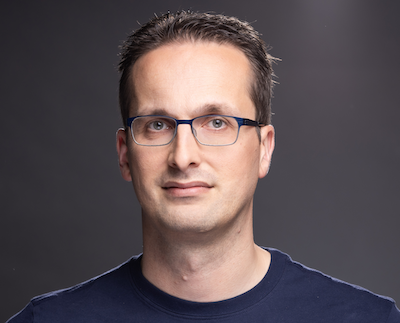Keynotes
Exploring the Low Altitude Airspace: From Natural Resource to Economic Engine
The low altitude airspace, generally defined as the region below 1000 meters above ground level, remains a frontier ripe for exploration and economic exploitation. With advancing technology, this domain is poised to become a crucible for diverse economic activities, transmuting a mere natural resource into a potent economic asset. This presentation offers a comprehensive overview of the burgeoning low altitude economy (LAE), bolstered by first-hand insights into the infrastructure developments enabling LAE's realization. Specifically, I will delve into the research and development towards constructing a smart integrated infrastructure for the LAE. At the core of this infrastructure lies the Smart Integrated Low Altitude System (SILAS), an operating system designed to address the multifaceted needs of operations, regulations, and end-users.
Similar to conventional operating systems such as Windows, SILAS orchestrates resource management, activity coordination, and user administration within the low altitude airspace. This comprehensive management spans from the registration and operation of drones to the establishment of landing posts and the seamless orchestration of communication channels, ensuring all airborne activities are scheduled efficiently in both space and time. SILAS is engineered to perform real-time spatiotemporal flow computing for numerous flying objects, a critical capability to ensure safety within the low altitude airspace. This advanced system must adeptly manage the intricate and high-frequency flying activities, from observation to proactive guidance, overcoming numerous technological hurdles. Designed to handle one million daily flights in a major city, with a peak online presence of one hundred thousand, SILAS sets a new benchmark for airspace management. In comparison, contemporary metropolitan airports currently manage only a few thousand commercial flights daily. The volume and complexity of future flights in the low altitude airspace surpass the capabilities of traditional airspace management systems employed in commercial airports, underscoring the necessity of SILAS.
Speaker

Harry Shum
Harry Shum is the Council Chairman of Hong Kong University of Science and Technology. He was previously Executive Vice President of Microsoft Corporation, responsible for AI and Research until March 2020. He received his PhD in Robotics from School of Computer Science, Carnegie Mellon University. He is a Fellow of IEEE and ACM, and an international member of National Academy of Engineering and Royal Academy of Engineering. He attended his first CVPR at Champaign, IL in 1992.
The Llama Herd of Models: System 1, 2, 3 Go!
Modern artificial intelligence (AI) systems are powered by foundation models. These models enable AI systems to understand and produce language, to perceive and generate visual content, to recognize and produce speech, and to perform actions in digital environments. While foundation models initially resembled System 1 (thinking fast), they are starting to implement a type of System 2 (thinking slow) that enables them to reason through complex problems before producing an answer. In this talk, I will describe the development of the Llama family of foundational models. I will also argue that the next frontier in the development of foundation models is to equip them with a “System 3” that enables models to think together.
Speaker

Laurens Van der Maaten
Laurens van der Maaten is a Distinguished Research Scientist at Meta AI. He made contributions to many different aspects of AI, including representation learning, web-scale training of visual recognition systems, and privacy and security in machine learning. His work has received best paper awards at CVPR and UAI. Laurens co-led the development of Llama 3 and led the development of the Llama 4 Reasoning model.
Gemini Robotics, Bringing AI to the Physical World
A new wave of general purpose robots is promising to bring helpful robots into many areas of human life. But in order to be truly useful, such robots require generalist embodied intelligence.
In order for robots to be helpful, they need to be capable of sophisticated skills, understand and reason about the world around them, interact with humans, and be able to generalize to new situations and tasks. I will discuss some of the building blocks that GDM Robotics is developing to this end, focusing on our recently released family of Gemini Robotics foundation models. Having been designed with robotics in mind, they combine Gemini’s world understanding with the ability to reason about the physical world and take action. With generality, interactivity, dexterity, and enhanced embodied reasoning they’re laying a foundation for a new generation of helpful robots.
Speaker

Carolina Parada
Dr. Carolina Parada is a Senior Director and lead of the Google DeepMind Robotics team, where our mission is to build the most advanced embodied AI responsibly to benefit humanity. Carolina is passionate about developing useful robots in everyday life through human centered robot learning, and her background is in controls and deep learning for robot-perception, mobility, simulation, and embodied reasoning. Before GDM Robotics, Carolina has also led perception teams for self-driving cars at Nvidia. At Google, she was also a lead in the Speech team, where she spearheaded multiple research efforts that enabled voice products at Google, including Voicesearch, Ok Google and Google Home.
Successful Page Load